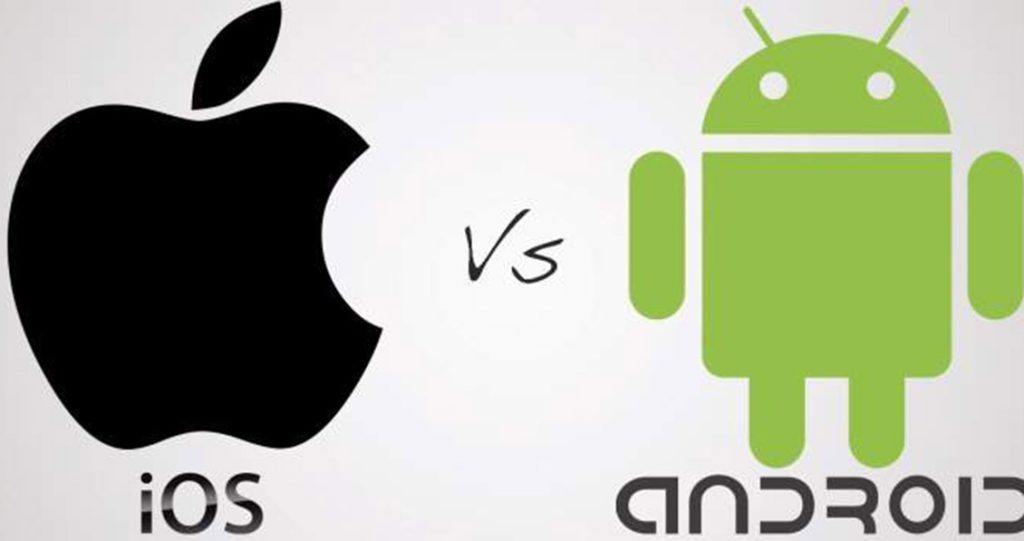Android and iOS are the two dominant operating systems in the smartphone market, shaping the way we interact with our mobile devices. Android, developed by Google, made its debut in 2008. Its roots can be traced back to a company named Android Inc., which Google acquired in 2005. Since its inception, Android has undergone significant transformations and advancements, becoming the cornerstone of a diverse range of smartphones and other devices globally.
One of the defining features of Android is its open-source nature, allowing device manufacturers to customize and modify the operating system to suit their devices. This openness has led to an extensive array of Android devices, catering to various price points, preferences, and functionalities. Google Play Store, the primary app marketplace for Android, hosts millions of applications, offering users a vast ecosystem of apps, games, utilities, and more.
In contrast, iOS, developed by Apple, emerged in 2007 with the launch of the original iPhone. It has since evolved into a powerful and refined operating system known for its smooth performance, security, and tight integration with Apple’s hardware. iOS is exclusive to Apple’s devices like the iPhone, iPad, and iPod Touch. Renowned for its user-friendly interface and seamless ecosystem, iOS maintains a closed ecosystem, ensuring a consistent experience across Apple devices.
Both Android and iOS have significantly impacted the smartphone industry. Android’s open-source nature has led to widespread adoption among various manufacturers, offering a multitude of choices to consumers worldwide. Meanwhile, iOS, known for its reliability and uniform user experience, has cultivated a dedicated user base drawn to Apple’s ecosystem of products and services. These operating systems have set benchmarks for user experience, app development, and device innovation, contributing immensely to the evolution of mobile technology.
Android stands out for its extensive customization options, allowing users to personalize their device’s appearance and functionality. Users can modify home screen layouts, install custom launchers, and use widgets for quick access to information without opening apps. The system allows for deep customization, enabling users to tweak settings, choose default apps, and access system-level features, offering a more tailored experience.
On the other hand, iOS is known for its uniform and intuitive interface. It emphasizes consistency across devices, ensuring a seamless user experience. While iOS doesn’t offer the same level of customization as Android, it provides a polished and user-friendly interface that’s easier for many users to navigate. Widgets were introduced in recent iOS versions, allowing users to add customizable widgets to the home screen, albeit with more limited placement options compared to Android.
App Ecosystem:
Google Play Store, Android’s primary app marketplace, boasts a vast array of apps, ranging from utility to gaming and productivity. It offers millions of applications, providing users with an extensive selection. However, the open nature of Android sometimes leads to issues with app quality and security due to less stringent app review processes compared to iOS.
The Apple App Store is renowned for its stringent app review process, ensuring high-quality apps and enhanced security. While the number of apps available on the App Store might be slightly lower than Google Play Store, it maintains a reputation for offering curated and polished applications. Apple often attracts developers due to the higher potential for monetization and the premium user base.
Device Diversity and Fragmentation:
Android operates on a wide range of devices manufactured by various companies, offering users diverse options in terms of design, features, and price points. However, this diversity can lead to fragmentation issues where devices run on different Android versions, causing delays in software updates and inconsistent user experiences across devices.

In contrast, iOS operates exclusively on Apple devices, ensuring uniformity and consistency. Apple controls both the hardware and software aspects, allowing for a seamless integration between the two. This control allows Apple to provide consistent software updates across its supported devices, ensuring users have access to the latest features and security patches simultaneously.
Security and Privacy:
Android and iOS approach security differently. Android’s security model includes multiple layers of protection, such as sandboxing apps, Google Play Protect, and regular security patches. However, due to its open-source nature and device diversity, security vulnerabilities and malware risks may arise, especially on devices running older versions with delayed updates.
iOS is known for its stringent security measures, including app sandboxing, end-to-end encryption for data, and a strict app review process. The closed ecosystem and Apple’s control over both hardware and software contribute to fewer security vulnerabilities and a lower risk of malware. Regular and timely updates are a significant factor in maintaining iOS devices’ security integrity.
Privacy settings in both Android and iOS allow users to control app permissions, location access, and data sharing. Both operating systems provide robust privacy controls, but iOS tends to offer more granular control over app permissions, providing users with enhanced privacy management.
Integration with Other Platforms and Devices:
Android and iOS differ in their approach to integration with other devices and platforms. Android’s open ecosystem allows for more device compatibility with a wide range of third-party devices, including smartwatches, smart TVs, and smart home devices. However, this openness can sometimes lead to interoperability issues due to fragmentation or varying standards.
In contrast, iOS maintains a more closed ecosystem, limiting direct compatibility with non-Apple devices. However, it ensures seamless integration among Apple products, offering users a unified experience across iPhones, iPads, Macs, Apple Watches, and other Apple devices through services like iCloud and Handoff.
Updates and Support:
Android’s update system faces challenges due to device fragmentation. While Google provides regular security updates and major OS upgrades for Pixel devices promptly, other manufacturers might delay or altogether skip updates for their devices. This inconsistency often results in devices running outdated software, leading to potential security risks.
iOS benefits from Apple’s centralized approach, allowing the company to provide timely updates to all supported devices simultaneously. Apple typically supports devices with regular updates for several years after their release, ensuring users receive the latest features and security enhancements. This long-term support contributes to better device longevity and compatibility with newer apps and services.
Voice Assistants and AI Integration:
Google Assistant, available on Android devices, and Siri, exclusive to iOS devices, are both powerful voice assistants. Google Assistant leverages Google’s extensive knowledge graph to offer robust search capabilities, contextual understanding, and natural language processing. It excels in providing relevant information and context-based responses across various apps and services.
Siri, Apple’s voice assistant, focuses on device integration and performs well in executing device-related tasks such as setting reminders, sending messages, and controlling smart home devices. However, it may not be as extensive in delivering web-based or contextually rich responses compared to Google Assistant.
Both voice assistants have advanced AI integration and voice command capabilities. Google Assistant benefits from Google’s vast data ecosystem, providing users with personalized recommendations, proactive suggestions, and a more contextual conversational experience. Siri emphasizes user privacy by processing most commands directly on the device, limiting data sharing.
Customizability vs. Simplicity:
Android, being an open-source platform, offers extensive customization options, allowing users to personalize their device experience extensively. Users can customize home screens, install custom launchers, tweak system settings, and even install modified versions of the OS (ROMs). This flexibility caters to users who prefer a more personalized and tailor-made experience.
On the other hand, iOS prioritizes simplicity and uniformity across devices. Apple’s design philosophy emphasizes intuitive user interfaces with consistent design elements and ease of use. While iOS offers less customization compared to Android, its streamlined interface ensures a more consistent and user-friendly experience, particularly for those who prefer a simpler interface.
Multimedia Experience:

Both Android and iOS provide excellent multimedia experiences, albeit with some differences. Android devices offer diverse options for media consumption, supporting various video and audio formats. The Google Play Store offers a wide range of apps for music, video streaming, and gaming. Android devices often provide high-resolution displays, contributing to an immersive multimedia experience.
iOS devices, known for their integration between hardware and software, deliver a smooth and optimized multimedia experience. The App Store offers a comprehensive selection of high-quality apps for media consumption, gaming, and productivity. Additionally, iOS devices like iPads and iPhones typically have excellent display quality, color accuracy, and powerful audio output, enhancing the overall multimedia experience.
Productivity and Workflow:
Android and iOS platforms offer robust productivity tools and multitasking capabilities but with distinct approaches. Android’s multitasking abilities are extensive, allowing users to run multiple apps simultaneously, view them in split-screen mode, and customize how apps interact. This flexibility enhances workflow efficiency, especially for power users and those who handle multiple tasks simultaneously.
iOS, while maintaining a clean and intuitive interface, provides multitasking features such as Split View and Slide Over on iPads and newer iPhones. These features allow users to work with multiple apps simultaneously, but the level of customization and flexibility is comparatively limited when compared to Android. However, Apple’s ecosystem ensures seamless integration between devices, enabling users to transition smoothly between iPhones, iPads, and Macs.
Both platforms integrate well with various business apps and productivity software. Google Workspace and Microsoft Office are available on both Android and iOS, allowing users to create, edit, and share documents across devices. Additionally, third-party productivity apps, task managers, and note-taking apps are widely available on both platforms, catering to diverse user needs in terms of productivity tools.
Customer Support and Community:
Both Android and iOS platforms offer customer support through official channels, such as online resources, documentation, and customer service centers. Apple provides comprehensive customer support, including Apple Support, Genius Bars in Apple Stores, and an active online community. Users can access various resources, tutorials, and troubleshooting guides on Apple’s website and forums.
Android, being an open-source platform, offers support through manufacturer-specific channels, carrier support, and the Android Help Center. Users can find troubleshooting guides, FAQs, and community forums provided by manufacturers like Samsung, Google, and others.
Price Range and Affordability:
Android devices come in a wide price range, offering options from budget-friendly smartphones to premium flagship models. This variety allows users to choose devices based on their budget, providing affordability options without compromising core functionalities. Conversely, iOS devices, particularly iPhones and iPads, tend to be relatively more expensive than most Android devices. Apple focuses on premium hardware and software integration, leading to higher price points for its devices.
Android and iOS platforms both excel in various aspects, offering distinct advantages based on user preferences and needs. Android’s customization options, diverse device options, and extensive ecosystem cater to users seeking flexibility and affordability. Conversely, iOS’s user-friendly interface, seamless ecosystem integration, and strong focus on privacy and security appeal to users looking for a unified and consistent experience across devices.
Users should consider their priorities, workflow requirements, app preferences, and ecosystem alignment to make an informed decision between the two platforms.

